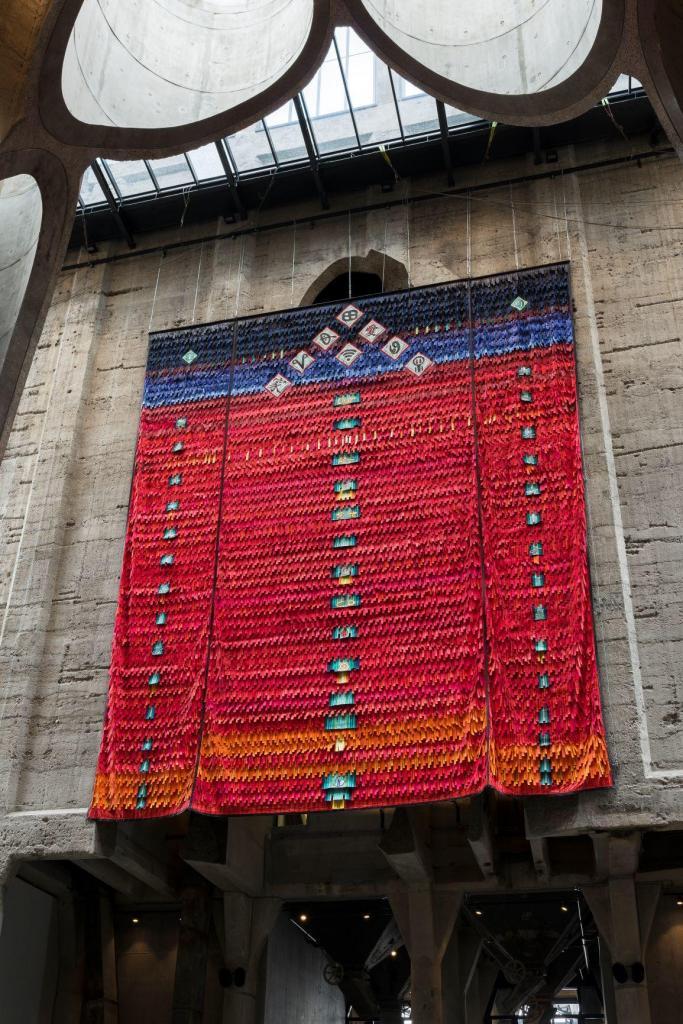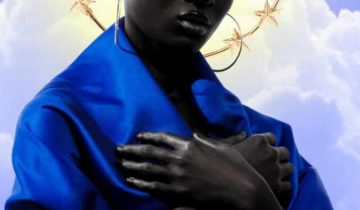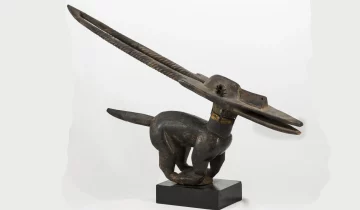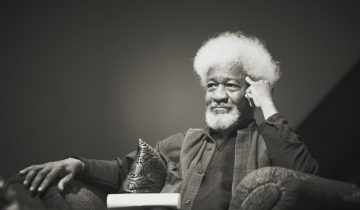The Evolution of Contemporary African Textile Art – Introduction
In the vast expanse of our visual world, the art form of textiles has been an essential thread weaving cultures together since time immemorial. While the study of textile art has spanned across various continents, the richness and depth of African textile art have remained largely underrepresented. As we delve into the complex tapestry of Contemporary African Textile Art, it is crucial to recognize the intricate histories and techniques that have been passed down through generations, while simultaneously acknowledging the ingenuity of the modern African artist who weaves together traditional methods and contemporary sensibilities.
African textile art, with its vibrant colors, intricate patterns, and diverse techniques, has long held a special place in the cultural fabric of the continent. The tradition of textile art in Africa is as varied as the many communities that make up this vast land. Each region boasts its unique textile traditions, reflecting the dynamic interplay of history, culture, and environment. As the world turns its gaze toward the contemporary African art scene, the legacy of African textile art has found new life in the hands of innovative artists, who have skillfully blended time-honored techniques with fresh perspectives, creating a visual language that transcends borders.
The purpose of this essay is two-fold. First, we shall analyze the development and transformation of African textile art in recent times, exploring the myriad influences and factors contributing to these changes. Second, we shall examine the works of prominent contemporary African textile artists, delving into their practices and highlighting the unique ways in which they incorporate traditional and unconventional materials, techniques, and themes into their work. By focusing on the evolution of Contemporary African Textile Art, we hope to illuminate the resilience, beauty, and profound significance of this often-overlooked art form.

A. Historical Context of African Textile Art
1. Traditional Techniques and Materials
Long before the advent of modern technology, African artists have relied on a diverse range of techniques and materials to create their textile masterpieces. Among these traditional methods are weaving, dyeing, and embroidery, each lending its unique characteristics to the finished product. Weaving, for instance, has been a cornerstone of African textile art, with the loom serving as a powerful symbol of creativity and wisdom in many cultures. Dyeing, on the other hand, has imbued African textiles with a kaleidoscope of colors, ranging from the deep indigo of the Yoruba Adire cloth to the vibrant hues of the Malian Bogolanfini, or mud cloth. Embroidery, too, has played a significant role in the African textile tradition, adding intricate patterns and textures to fabrics such as the Hausa and Fulani robes.
2. Symbolism and Cultural Significance
Beyond their aesthetic allure, African textiles have long served as vehicles for the transmission of cultural knowledge, embodying the values, beliefs, and histories of their creators. For example, the intricate patterns of the Kente cloth, woven by the Akan people of Ghana, convey complex messages about the wearer’s social status, lineage, or aspirations. Similarly, the Yoruba Adire cloth, adorned with symbols and motifs, narrates stories and proverbs, providing valuable insights into the culture and worldview of its makers. In this way, African textile art transcends mere decoration, embodying a rich tapestry of meaning and cultural significance.
B. Global Influences and Adaptation
1. Colonialism and its Impact on African Textile Art
The encounter between Africa and Europe during the colonial era had far-reaching consequences for the African textile tradition. As new materials, techniques, and designs were introduced, African artists began to incorporate these foreign elements into their work
, often with striking results. For instance, the introduction of synthetic dyes and European textiles led to the emergence of vibrant, colorful designs, such as the iconic Dutch wax prints that have come to be synonymous with African fashion. While some may argue that these influences diluted the authenticity of African textile art, others contend that they served to enrich the tradition, as artists ingeniously adapted and reinterpreted these new elements in their own unique ways.
2. Post-colonial African Textile Art
In the wake of colonialism, African artists sought to reclaim and revitalize their traditional techniques, while simultaneously engaging with the broader global art scene. This period saw a resurgence of interest in indigenous textile practices, such as the Bogolanfini of Mali, as artists sought to preserve and celebrate their cultural heritage. At the same time, African textile artists began to experiment with new materials, techniques, and themes, often fusing their work with other art forms, such as painting, sculpture, and installation. In doing so, they carved out a distinct space for themselves in the international art world, challenging conventional notions of what Contemporary African Textile Art could be.
C. Contemporary African Textile Art and Artists
1. Prominent Contemporary African Textile Artists
As Contemporary African Textile Art continues to evolve, a new generation of artists has emerged, each pushing the boundaries of what is possible within the medium. Among these artists are the likes of El Anatsui, Abdoulaye Konaté, Yinka Shonibare, Billie Zangewa, and Nnenna Okore, to name a few. Each of these artists brings their own unique vision and sensibility to the textile tradition, breathing new life into the art form.
a. El Anatsui
El Anatsui, a Ghanaian artist based in Nigeria, has gained international acclaim for his monumental textile-like sculptures, which he creates using discarded aluminum bottle caps and copper wire. By transforming these humble materials into shimmering, cascading works of art, Anatsui not only showcases his technical prowess but also engages with themes of consumerism, waste, and the passage of time.
b. Abdoulaye Konaté
Malian artist Abdoulaye Konaté is renowned for his large-scale textile installations, which he creates using dyed and woven fabric. Drawing on the rich tradition of Malian textile art, Konaté’s work often explores themes of social, political, and environmental importance, such as the impact of climate change and the global refugee crisis.
c. Yinka Shonibare
Yinka Shonibare, a British-Nigerian artist, is best known for his use of Dutch wax prints in his sculptures, installations, and photographs. By incorporating these fabrics, which have a complex colonial history, Shonibare raises questions about identity, power, and the legacy of imperialism in Contemporary African Textile Art.
d. Billie Zangewa
South African artist Billie Zangewa creates intricate, hand-stitched silk collages that depict scenes from her everyday life. Her work offers a tender, intimate look at the experiences of women, motherhood, and the domestic sphere, while also engaging with broader themes of race, gender, and identity.
e. Nnenna Okore
Nigerian artist Nnenna Okore is known for her intricate, three-dimensional textile sculptures, which she creates using found and recycled materials, such as newspapers, ropes, and fabric. Her work explores themes of decay, transformation, and rebirth, reflecting both the natural world and the human experience.
2. New Techniques, Materials, and Themes
As the works of
these contemporary artists demonstrate, Contemporary African Textile Art has undergone a remarkable transformation in recent years, as artists continue to experiment with new techniques, materials, and themes. In addition to traditional weaving, dyeing, and embroidery, today’s artists are also incorporating unconventional materials such as plastic, metal, and found objects into their work, challenging conventional notions of what textile art can be. Furthermore, they are addressing a wide range of social, political, and environmental issues, reflecting the concerns and experiences of their communities and the wider world.
D. Global Recognition and the Art Market
1. African Textile Art in International Exhibitions and Galleries
As Contemporary African Textile Art gains increasing recognition and appreciation, the works of African textile artists are being featured in prestigious exhibitions and galleries around the world. Major institutions, such as the British Museum, the Metropolitan Museum of Art, and the Centre Pompidou, have showcased African textile art in their collections and exhibitions, helping to raise the profile of these artists and their work.
2. Market Demand and its Influence on Contemporary Creations
The growing demand for Contemporary African Textile Art in the global art market has had both positive and negative implications. On the one hand, the increased visibility and appreciation of African textile art has provided artists with new opportunities and resources, enabling them to further develop their practice and reach new audiences. On the other hand, the pressures of the market can sometimes encourage the production of derivative or commercialized works, potentially diluting the unique vision and integrity of the artists.
3. The Role of African Textile Art in the Global Art Market
Despite the challenges posed by the global art market, Contemporary African Textile Art continues to make a valuable contribution to the international art scene. By preserving their cultural heritage while simultaneously pushing the boundaries of their medium, contemporary African textile artists are helping to redefine the global art discourse and fostering a greater understanding and appreciation of the richness and diversity of African art.

In conclusion, the evolution of Contemporary African Textile Art is a testament to the resilience, creativity, and ingenuity of African artists, who have navigated the complex interplay of tradition, innovation, and global influences to create a vibrant, dynamic art form that transcends borders. As we celebrate the accomplishments of these artists and their work, it is essential that we continue to support and nurture the development of African textile art, ensuring that it remains a vital and thriving part of our global cultural fabric.
The continuing significance of African textile art lies not only in its preservation of cultural heritage but also in its contribution to the global art discourse. By embracing both the old and the new, contemporary African textile artists are helping to forge a new visual language that speaks to the shared experiences, concerns, and aspirations of people around the world.
Looking ahead, the future prospects and challenges of Contemporary African Textile Art will likely revolve around striking a balance between tradition and innovation, ensuring that the unique heritage of African textile art is preserved and celebrated, while also allowing for the growth and evolution of the art form. Additionally, it will be crucial to promote sustainability and ethical practices in the creation and consumption of African textile art, ensuring that the artistic legacy of this remarkable tradition endures for generations to come.





 No products in the basket.
No products in the basket.
As a textile designer, I can’t help but admire the richness and depth of African textile art. It is fascinating to see how traditional techniques and materials have been passed down through generations, while contemporary African artists have skillfully blended these methods with fresh perspectives. I really recommend this article to anyone looking for inspiration.